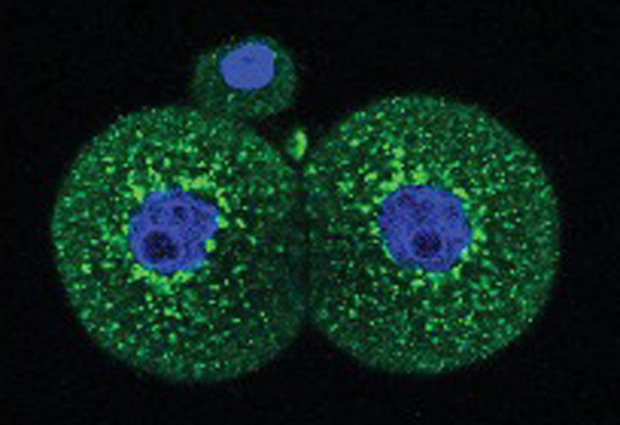Embryos use ancient viral DNA
EMBL scientists detect important function of genetic sequence our ancestors assimilated from a virus

DNA from viruses that once infected our ancestors millions of years ago have remained in our genome to this day. In a study published today in eLife, EMBL scientists found that activation of one class of these ancient viral sequences is critical for early mouse embryo development, and identified the protein involved in regulating them.
“We found that a part of mouse DNA, which was likely originally from a virus that infected their ancestors, is now important for the mice’s development,” says Jamie Hackett from EMBL, who led the study with Azim Surani from the Gurdon Institute in Cambridge, UK.
In a nutshell
- genetic sequence that once belonged to a virus is important for mammalian embryos to develop
- this viral sequence is switched on at very first stages of development
- although the study was performed on mice, the principle could hold true for humans
Working with colleagues at EMBL-EBI and at the Gurdon Institute in Cambridge, UK, Hackett studied a genetic sequence called MuERV-L. This portion of DNA is a transposable element – a genetic sequence that can copy-and-paste itself from one location to another in the genome.
The scientists found that a protein called ‘Stella’ – which the embryo receives from its mother – is involved in activating this transposable element at the very beginning of the embryo’s development, when the fertilised egg first divides.

“Mouse embryos without the Stella protein did not survive beyond the first few days of cell division,” says Hackett. “We found that this is partly because Stella regulates this transposable element, which in turn activates a number of genes that are important for early development.”
Although the work was done on mice, humans also have Stella and their own transposable element sequences, which could play a comparable key role in human development. Next, Hackett’s lab at EMBL would like to further investigate how transposable elements regulate genes, and how epigenetics may play a role in this process.



